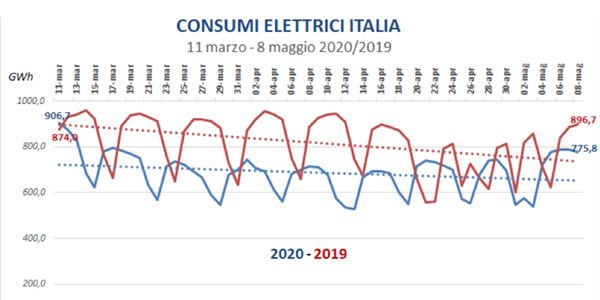COVID-19 and electricity demand in Italy during the lockdown: impact on cybersecurity

In Italy, as in most parts of Europe, the measures to control the spread of the COVID-19 pandemic has had relevant impacts in several sectors, last but not the least the electricity one. The changes in day-to-day routine has affected the national energy demand: from the 11th of March to the 8th of May in Italy the electricity demand was dropped by -16%, with a decrease of about 7.7 TWh in comparison with the same period in 2019 (source TERNA, see figure). Despite this impressive reduction, the energy coming from RES has covered 44,6% on average of the daily electricity demand, reaching in some days 64%, without any impact on the electrical system, although the operators were alerted about the request of RES curtailment in case of emergency.
If the thermoelectric generation shown a reduction of 26.6% in comparison with the same period in 2019, due to the decrease in the national energy demand, the energy from RES increase of 2.8% (about 485 GWh more than in 2019). The wind power decreased of about -25.8% with 935 GWh less than in the period 11th of March – 8th of May 2019, due to the stop of some wind turbines for the unavailability of maintenance services . On the other hand, PV production shown an increase of 13.9% (+623 GWh).
In this scenario, the pandemic can pose a threat to utilities, especially because this sector relies on its people. In actual fact, a basic lack of manpower and an increase in virus-related phishing scams and malware attacks due to the COVID-19 outbreak could make more vulnerable to cyberattacks the whole electricity sector. Moreover, remote work forced to limit the virus’ spread involves cyber risks basically due to the home WiFi security, phishing scams and insecure passwords. All that considered, the new scenario needs the Utilities prepared and alerted on cyberattacks, with companies collaborating to mitigate the threat.












